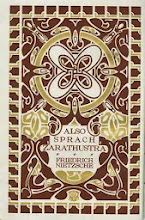This coulda been the last chapter of my first real college research paper!
So I did this paper when I was a freshman at Millikin University for my honors english and seminar course, it was one of the first real papers I ever wrote and was the first college paper that one of my college professors actually liked and said I did a good job on and I'm pretty sure she gave me an A for the class and that assignment because of it. Anyways, the paper was called, well I don't remember exactly for sure what the paper was called, but it was something like 'The Origins of the Irish Republican Army' and pretty much I traced the origin of the IRA and the events of the Easter Rebellion in 1916 all the way back to the Irish Potato Famine in 1845-1852, claiming that this deep seated hatred for Britain had started back then when many Irish potato farmers blamed British landowners and their policies for, if not causing the famine, at least exacerbating it to large proportions. Even wikipedia says this on their page on the famine when they write 'the impact and human cost in Ireland—where one-third of the population was entirely dependent on the potato for food—was exacerbated by a host of political, ethnic, religious, social and economic factors which remain the subject of historical debate' and later on it says that the famine 'became a rallying cry for nationalist movements,' proving my thesis when I didn't know nothing and was a simple college freshmen getting help from Emily because I didn't know how to write college papers. Anyways, I saw this the other day, and it brought back memories for me, check it out
Mystery of Irish Potato Famine Solved
 By Denise Chow, LiveScience Staff Writer | LiveScience.com – Fri, May 24, 2013
By Denise Chow, LiveScience Staff Writer | LiveScience.com – Fri, May 24, 2013"The degree of DNA preservation in the herbarium samples really surprised us," study co-author Johannes Krause, a professor of paleogenetics at the University of Tübingen in Germany, said in a statement.
The decoded genomes of these historical samples were then compared with modern Phytophthora strains from Europe, Africa and the Americas. The results enabled the researchers to trace the evolution of the pathogen, including where and when the HERB-1 and US-1 strains likely diverged.
According to the study, Phytophthora infestans originated in Mexico's Toluca Valley. When Europeans and Americans first came to Mexico in the 16th century, the pathogen experienced increased genetic diversity, and in the early 1800s, the HERB-1 Phytophthora strain emerged and was brought out of Mexico, the researchers said.
By the summer of 1845, the HERB-1 strain had arrived at European ports, and the potato disease spread throughout Ireland and the United Kingdom, causing the Irish potato famine. In the 20th century, as new varieties of potatoes were introduced, the HERB-1 strain was eventually replaced by the US-1 Phytophthora strain, the researchers said.
Evolving blight
This evolutionary change may have been spurred by the introduction of new crop breeding methods, which suggests that breeding techniques may affect the genetic makeup of plant pathogens.
"Herbaria represent a rich and untapped source from which we can learn a tremendous amount about the historical distribution of plants and their pests — and also about the history of the people who grew these plants," Yoshida said.
Yoshida and his colleagues report their findings in a paper that was submitted May 17 for publication in the journal eLife.


<< Home